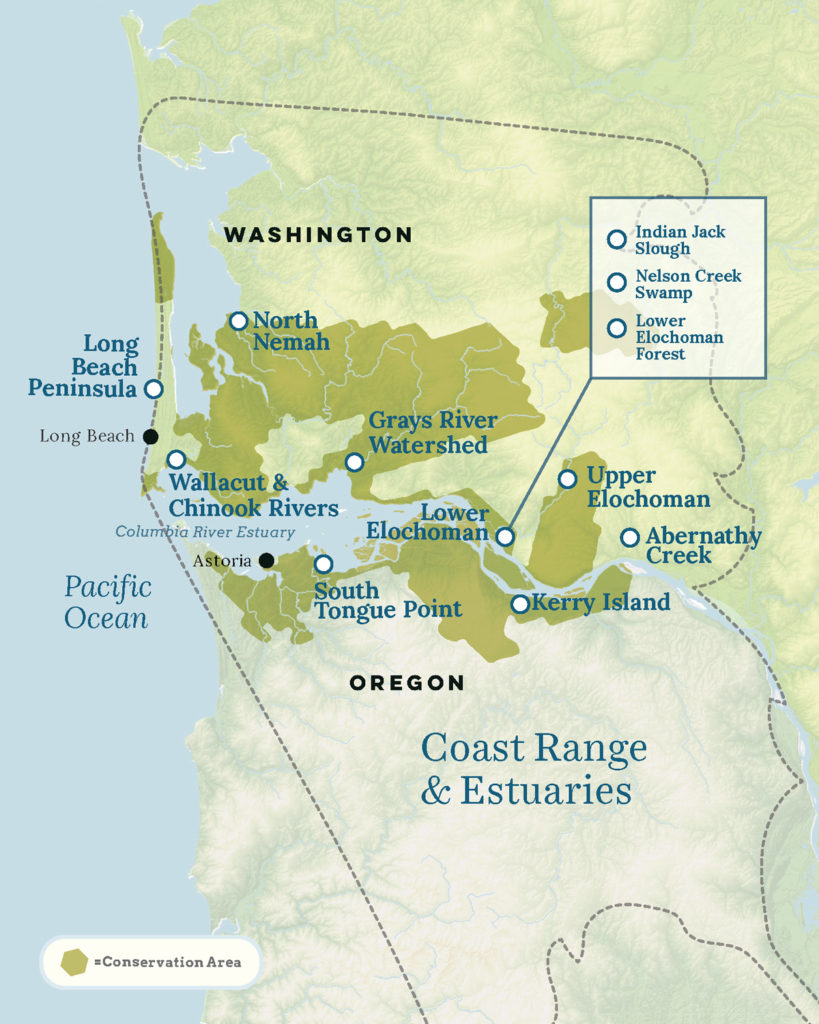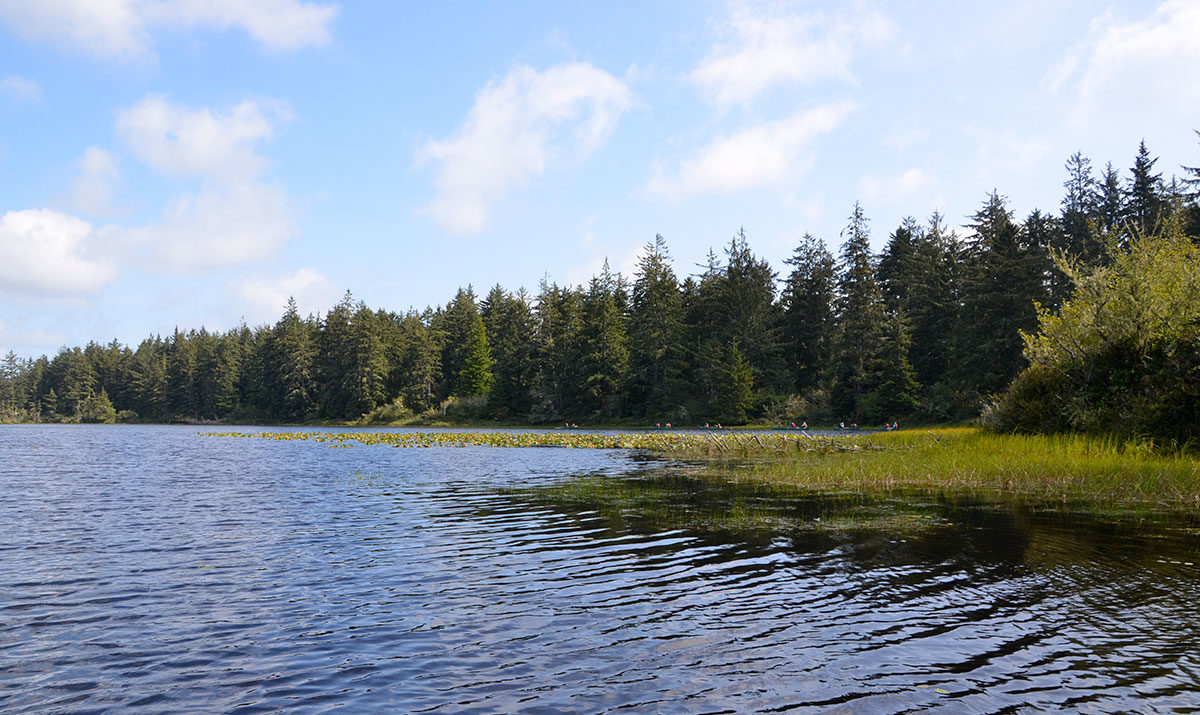Welcome to the Coast Range and Estuaries ecoregion! The mouth of the Columbia River and the lands to the north and south are some of the most ecologically fascinating landscapes you’ll ever see.
 Two massive migration routes, the Columbia River and the Pacific Flyway, intersect here. Salmon from the Columbia Basin, an area the size of France, all spend time in the Columbia River estuary, where freshwater and saltwater meet. Meanwhile, millions of birds migrate along the west coast, some traveling as far away as Patagonia and Alaska, and rely on the estuaries, tidal wetlands, and beaches for habitat along their journey.
Two massive migration routes, the Columbia River and the Pacific Flyway, intersect here. Salmon from the Columbia Basin, an area the size of France, all spend time in the Columbia River estuary, where freshwater and saltwater meet. Meanwhile, millions of birds migrate along the west coast, some traveling as far away as Patagonia and Alaska, and rely on the estuaries, tidal wetlands, and beaches for habitat along their journey.
Rivers, estuaries, coastal dunes, and old-growth forests blend together to support wildlife along with local fishing, forestry, & recreation industries. Unfortunately, many estuaries and rivers are today cut off from natural floodplains critical to fish, while the last remaining old forests are dwindling. In response, we’re conserving & restoring the best remaining coastal, wetland, river, & forest habitats, while working with communities to support balanced land management.
First Stop: Long Beach Peninsula & Willapa Bay
Encompassing more than 260 square miles, Willapa Bay is the second-largest estuary on the Pacific Coast and is very much a Northwest treasure. Willapa Bay is considered a site of hemispheric importance for migratory birds species and the ecosystem also supports a significant percentage of the Pacific Northwest’s oysters. The bay is bracketed by Long Beach Peninsula on the west and the forested Willapa Hills on the east.
A narrow spit of land comprised of beaches, and a series of undulating dunes and wetlands, Long Beach Peninsula is a tourist destination, as well as home to a number of cranberry farms. Our conservation work here has helped conserve the limited freshwater resources available to the community while protecting habitat for a stunning array of wildlife. Keep an eye out for black bears.
On East Willapa Bay, we’ve conserved river, forest, and tidal wetland habitat along several waterways utilized by salmon including Seal Slough and all three forks of the Nemah River system. Fly through some of the conserved forests of the Nemah Complex!
Stop 2: South Tongue Point
On our next stop, we visit South Tongue Point, an island along the Oregon side of the Columbia River Estuary, where the Land Trust is pursuing a truly unique conservation opportunity in collaboration with Clatsop Community College. If we succeed in conserving this land, our plan is to transfer it to the College for use as a living laboratory to help educate and inspire the next generation of land stewards, foresters, and scientists. Learn More and check out a bird’s eye view of South Tongue Point:
Stop 3: Grays River
When bald eagles and gulls fill the sky over Grays River, it’s a safe bet that eulachon, a species of fish also known as candlefish because of their high oil content, have arrived.
The Grays River 80,000-acre watershed drains out of the Willapa Hills and flows into the Columbia River Estuary, just 20 miles from the Pacific Ocean. The watershed’s geology and climate long ago gave rise to some of the world’s grandest temperate rain forests.
Columbia Land Trust has conserved more than 1,000 acres in the Grays River watershed, much of it near the mouth of the river at Grays Bay. The Land Trust has spent the last 20 years restoring swaths of the lower river’s historic tidal floodplain, returning lowlands back to Sitka spruce swamp habitat benefitting salmon, waterfowl, and other wildlife.
We are now looking upstream to consider ways to help conserve and steward forestlands in ways that can help achieve the shared goals of the local communities: healthy fish and wildlife habitat, reducing frequency and severity of flooding and sedimentation, forest jobs, access to low-impact recreation, natural climate solutions through carbon sequestration, and clean air and water.
Stop 4: Elochoman River
On the Upper Elochoman River, we’ve invested years into conserve and restoring riverside forests and salmon habitat. Join us for a river-snorkeling adventure and a fish-eye view of the engineered logjams we put in place to improve habitat for salmon and help better replicate the benefits of naturally downed trees falling in the river.
Conservation Areas
Priority 1: Columbia River Estuary, Willapa Hills, Grays River
Priority 2: Chehalis River Headwaters, Elochoman River, Northern Long Beach Peninsula
Priority 3: Other important areas
